Update 08.16.2019 -- Run 9 pp: New R = 0.2 Pi0 Unfoldings
In light of the post below (and while we generate Pythia8 statistics with higher values of pThatMin), we have opted to push forward with unfolding our data using only our embedding (Pythia6) response. This post details the systematics that went into the corrections, compares the unfolded data against particle-level Pythia8 spectra, and the new unfolding results vs. the old results.
https://drupal.star.bnl.gov/STAR/blog/dmawxc/update-08022019-run-9-pp-pythia8-vs-pythia6-response-matrices-finer-binning
First things first, here are the systematics that went into the results below:
- Default Parameters -- Pi0-triggered Pythia6 response and priors, Bayesian algorithm, kReg = 4.
- kReg Variations -- kReg = 5 for all 3 eTtrg bins.
- Method Variations -- Bin-By-Bin algorithm for all 3 eTtrg bins.
- Efficiency Variations -- 5% taken off from default tracking efficiency for all 3 eTtrg bins.
- Decay Variations -- weak decays turned off at the particle-level for all 3 eTtrg bins.
- Prior Variation 1 -- power laws: a = 1.48 and b = 2.3 + 0.2 for eTtrg = (9, 11) GeV; a = 1.39 and b = 2.1 + 0.2 for eTtrg = (11, 15) GeV; a = 1.14 and b = 1.8 + 0.2 for eTtrg = (15, 20) GeV.
- Prior Variation 2 -- power laws: a = 1.48 and b = 2.3 - 0.2 for eTtrg = (9, 11) GeV; a = 1.39 and b = 2.1 - 0.2 for eTtrg = (11, 15) GeV; a = 1.14 and b = 1.8 - 0.2 for eTtrg = (15, 20) GeV.
The parameters of the power laws correspond to 'pow(pT) = a / pT^b' and are taken from these posts:
https://drupal.star.bnl.gov/STAR/blog/dmawxc/update-09212018-pythia-fitting-pi0-and-gamma-direct-spectra-power-laws
https://drupal.star.bnl.gov/STAR/blog/dmawxc/update-08142019-pythia-fitting-pi0-spectra-power-laws-ettrg-15-20-gev
The systematics that are left out are:
- Resolution Variation -- I did not vary the tracking resolution because previous studies demonstrated that it is negligible.
- Fragmentation Variation -- I did not vary the fragmentation model.
- Bin Size -- I did not vary the bin size here.
It's also worth noting that I adjusted the eTtrg of the pi0-trigger when generating the response for each bin of eTtrg. In other words, the response used on the (9, 11) bin was triggered with a pi0 with eTtrg = (9, 11) GeV; likewise for the other two bins. And now the results:
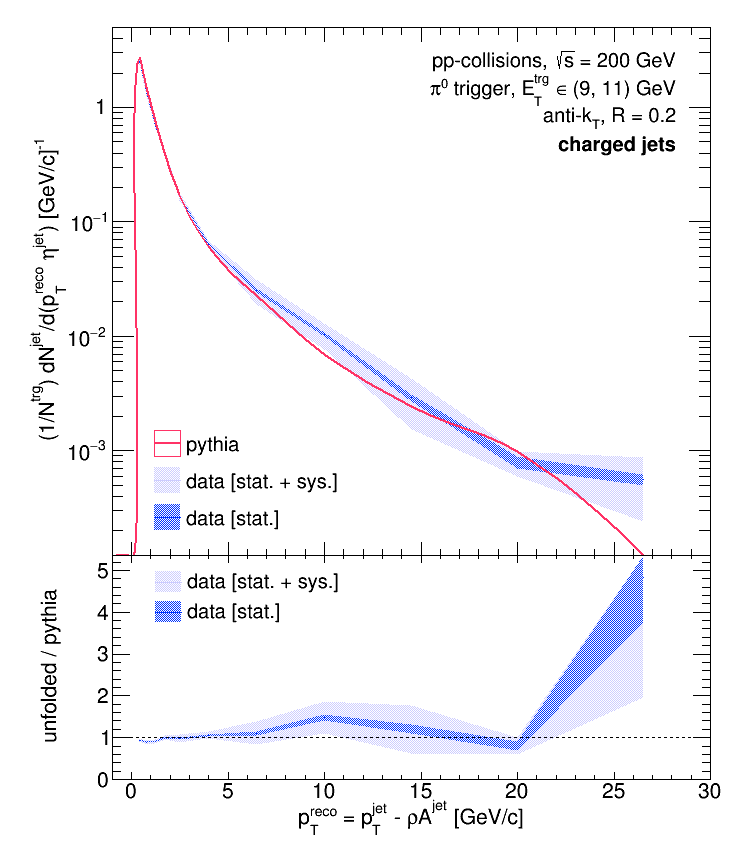
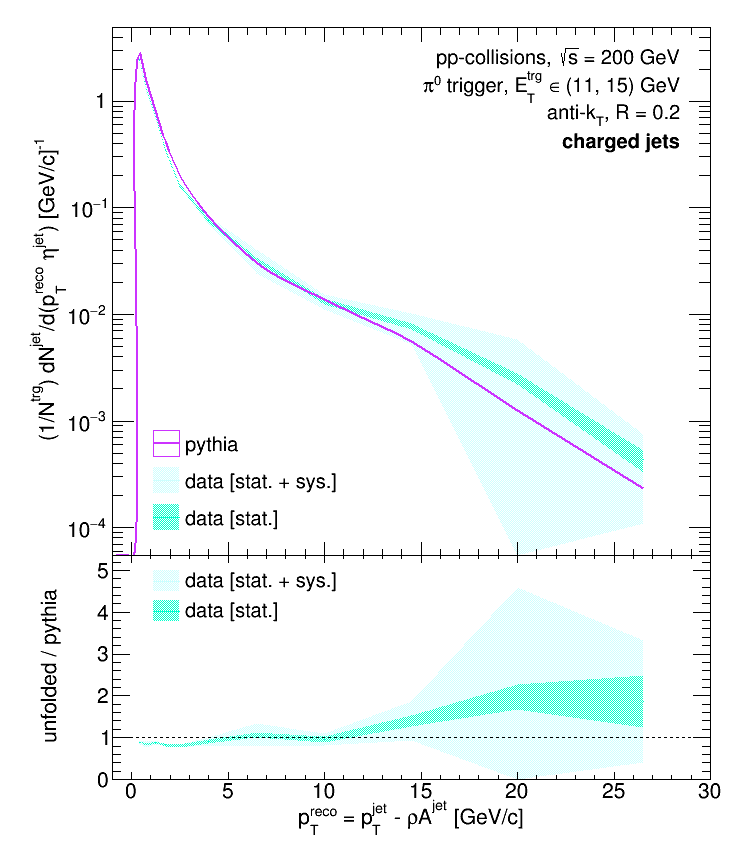
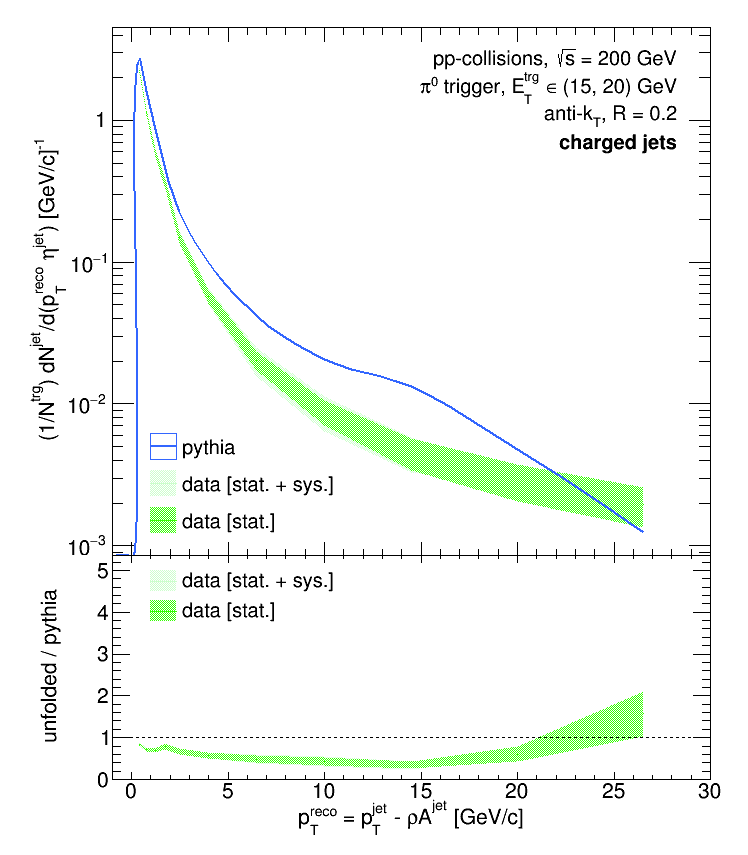
The agreement between Pythia8 and the unfolded data is quite good for the (9, 11) and (11, 15) GeV bins, but I'm not quite sure what's going on with the (15, 20) GeV bin yet. Previously, I had unfolded the (9, 11) and (11, 15) bins. You can find info on those here:
So how do these new results compare to the old?
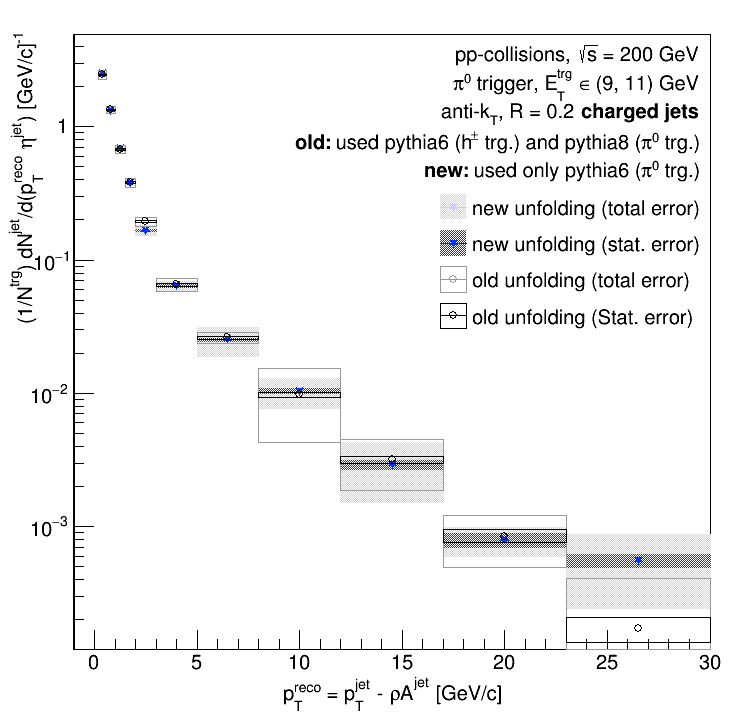
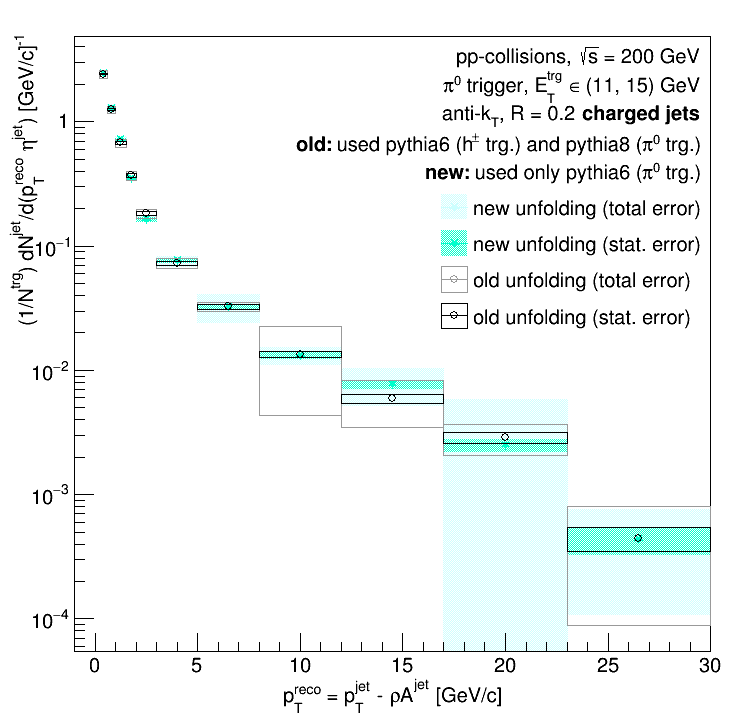
Very good! There are differences (as expected), but the old and new are consistent. And, happily, the new systematic uncertainties are tighter!
- dmawxc's blog
- Login or register to post comments
